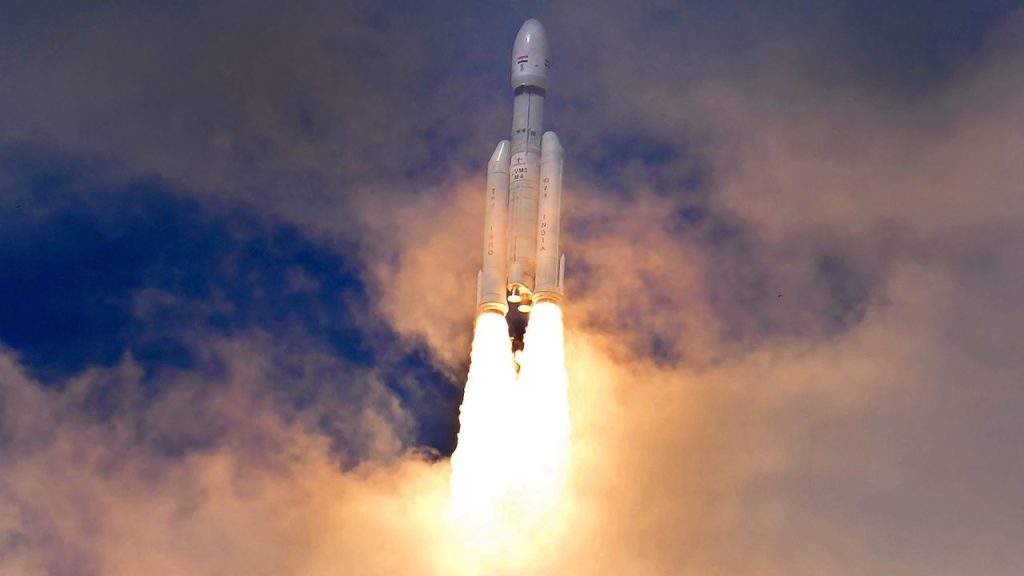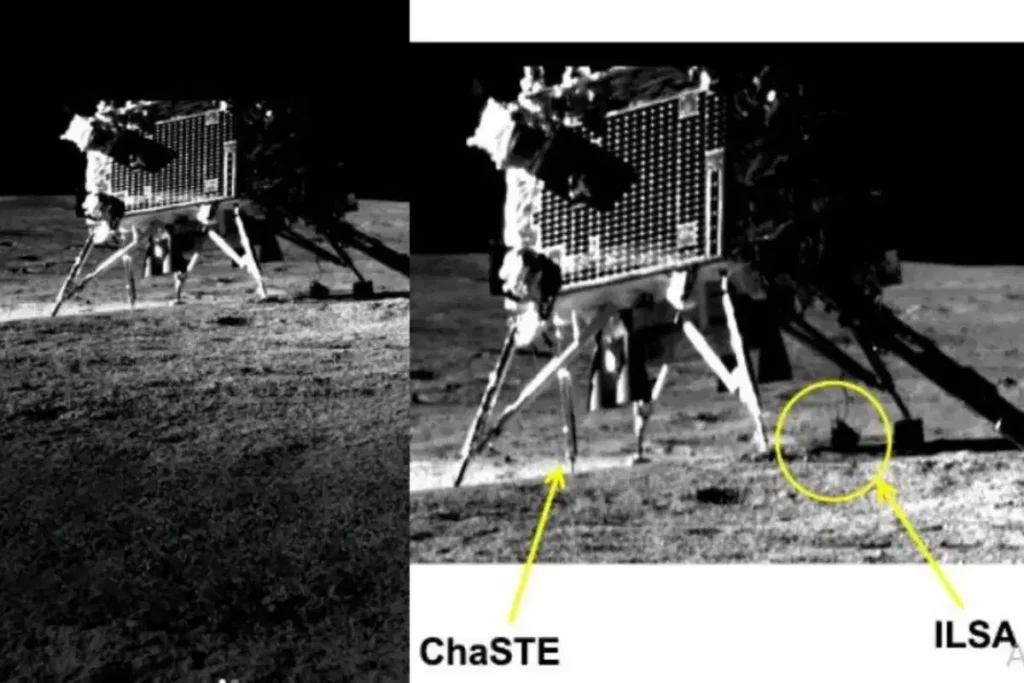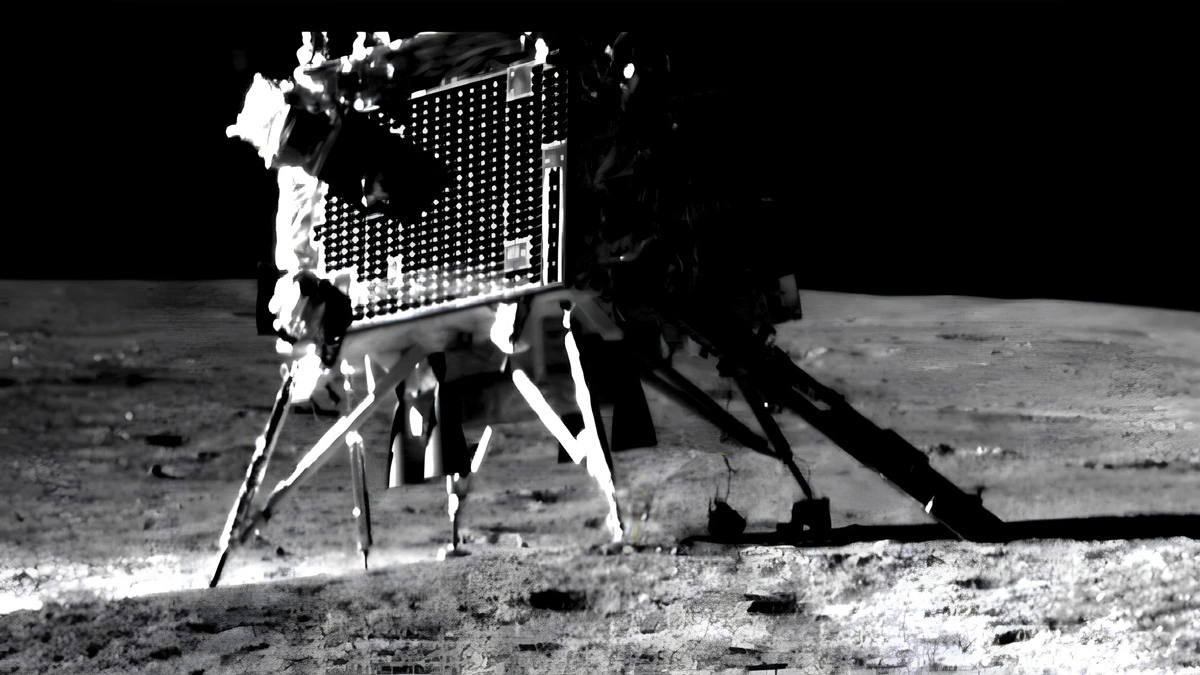The Chandrayaan-3 Pragyan Rover on the moon surveying the lunar surface shared the first image of Vikram Lander on Wednesday (August 30).
The Indian Space Research Organisation (ISRO) in a tweet shared the news. Its post with images on microblogging platform X (formerly known as Twitter), read, “Smile, please! Pragyan Rover clicked an image of Vikram Lander this morning. The ‘image of the mission’ was taken by the Navigation Camera onboard the Rover (NavCam). NavCams for the Chandrayaan-3 Mission are developed by the Laboratory for Electro-Optics Systems (LEOS).”
Beyond Borders, Across Moonscapes: India’s Majesty knows no bounds! Once more, co-traveller Pragyan captures Vikram in a Snap! This iconic snap was taken today around 11 am IST from about 15 m. The data from the NavCams is processed by SAC/ISRO, Ahmedabad
Also Read: US state of Georgia officially declares October as ‘Hindu Heritage Month’

This comes as the Rover discovered several chemical elements on the lunar surface.
While conducting the experiments, the Laser-Induced Breakdown Spectroscopy (LIBS) instrument onboard found sulphur.
“These in-situ measurements confirm the presence of Sulphur (S) in the region unambiguously, something that was not feasible by the instruments onboard the orbiters,” it said.
Not only Sulphur (S), the LIBS also found the presence of aluminium (Al), calcium (Ca), iron (Fe), chromium (Cr), and titanium (Ti) on the lunar surface. The quest for Hydrogen is underway.
The lunar Rover is currently on a 14-day mission to study the moon. Until now, the mission has achieved two objectives: a demonstration of a safe and soft landing on the lunar surface and the rover roving on the moon. Conducting in-situ scientific experiments is underway.
Also Read: OpenAI launches ChatGPT Enterprise with greater privacy, high-speed GPT-4
What is Vikram Lander?
Vikram is the lander of the Chandrayaan-3, The lander has 4 payloads- RAMBHA to measure the near-surface plasma density, ChaSTE to measure the thermal properties of the soil, ILSA to measure the seismicity around the landing site and LRA to understand the dynamics of the lunar system.

Giving an update, the space agency said that all payloads are performing normally.
After 14 days, Vikram Lander and Pragyan could live longer if they survive the lunar night.
Also Read: Rajinikanth film remains steady as it collects Rs 319 crore in India in 19 days

